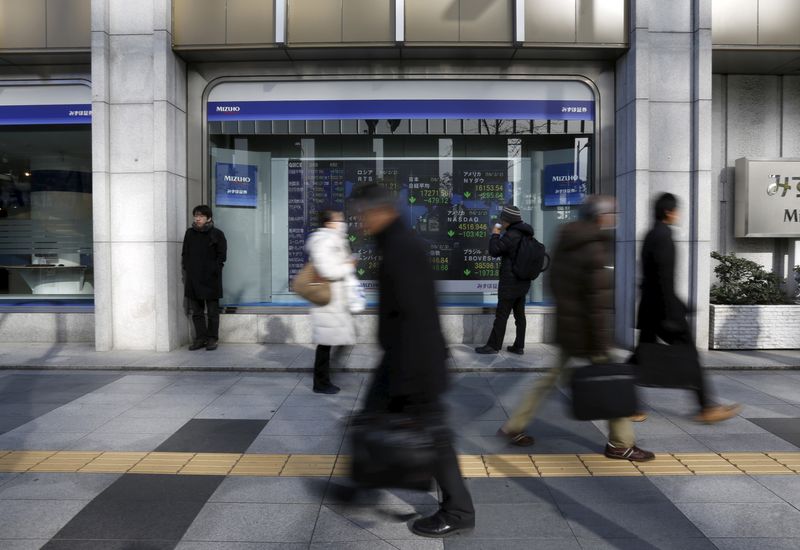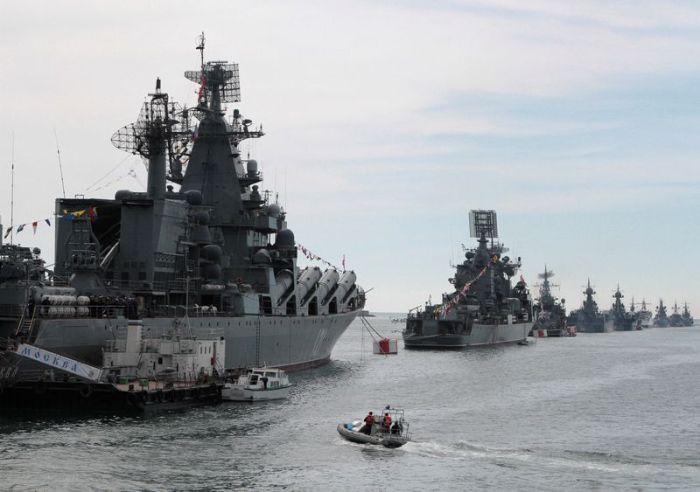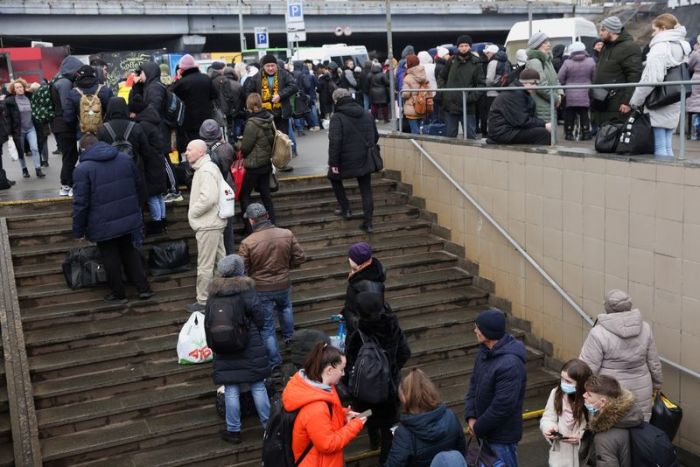LONDON (Reuters) -Russia’s attack on Ukraine sparked volatility and fresh uncertainty in markets on Thursday, as investors scrambled to assess the conflict’s longer term implications for asset prices.
After sinking earlier in the session, U.S. stocks surged later in the day while haven assets such as gold and Treasuries unwound some of their earlier gains. Oil prices, which breached $100 for the first time since 2014, also eased.
Markets have already taken investors on a bumpy ride this year, with the S&P 500 down around 10% year-to-date on worries over a more hawkish Federal Reserve and heightened geopolitical strife.
The attack on Ukraine will likely add another layer of uncertainty to markets, increasing the potential for more gyrations, investors said.
“We are going to churn here for a while,” said Ken Polcari, managing partner at Kace Capital Advisors. “We are going to have very volatile days and weeks ahead.”
In the United States, the benchmark S&P 500 reversed earlier losses and closed up nearly 1.5%. The tech-heavy Nasdaq Composite was up 3.3%.
President Joe Biden unveiled harsh new sanctions against Russia on Thursday afternoon, but held back from imposing sanctions on Russian President Vladimir Putin himself and from disconnecting Russia from the SWIFT international banking system.
“Hard-hitting sanctions would not only punish Russia but also Europe, so the afternoon rebound embraced the not-so-hard second round of sanctions,” said OANDA’s Edward Moya in a note to investors.
The market’s initial knee-jerk reaction was typical of that seen during past geopolitical flare ups. Gold prices jumped to their highest in more than a year and the dollar surged more than 1% against a basket of its peers as investors piled into so-called safe haven assets.
Yields on U.S. Treasuries, another popular destination for nervous investors, initially tumbled more than 10 basis points.
“Heightened volatility on the escalation of the conflict shows markets had not fully priced in the likelihood of deeper conflict,” said Mark Haefele, chief investment officer at UBS Global Wealth Management, in a Thursday report.
The geopolitical uncertainty and wild asset price gyrations could mitigate expected monetary tightening from the Federal Reserve and other central banks in coming months, some market watchers believe.
OPPORTUNITY?
For some investors, the sharp equity market falls offered a buying opportunity.
“There are a lot of people talking about buying the dip so I’m sure there are a lot of portfolio managers out there with shopping lists,” said Matthew Tuttle, chief investment officer at Tuttle Capital Management.
“We… bought a little more into shippers and dropped more energy but not doing a whole lot beyond that,” said Tuttle, who is bearish on stocks over the longer term.
With price pressures across major economies already at their highest in decades, others dashed for inflation trades.
In addition to the surge in oil prices, wheat futures jumped to their highest since July 2012, soybean futures gained to a nine-year peak, and corn futures hit an eight-month high. [GRA/]
“Whether there will be a full-blown war or not, the simple strategy is to bet on a spike in inflation,” said Yuan Yuwei, a Chinese hedge fund manager at Water Wisdom Asset Management. “That means buying oil and agricultural products, and shorting consumer shares and U.S. growth stocks.”
Some investors were also looking at assets linked to Ukraine and Russia, which have been hit hard in recent days.
One portfolio manager at a U.S-based asset manager, who asked not to be named, reckoned Ukraine’s beaten-down bonds were a bargain “unless Putin fully occupies Ukraine.”
The premium demanded by investors to hold Ukrainian debt relative to U.S. Treasuries soared to 15 percentage points – the widest since the country underwent a debt restructuring in 2015.
Russian assets also took a beating – the dollar-denominated RTS stock index crashed 40% to 489 points, its lowest since 2016, while yields on Russian sovereign bonds soared. But bargain hunters were not expected to rush in.
“Buying the dip may be the right response to geopolitics but it’s not necessarily true for the part of the world where the fire is actually burning,” said Dirk Willer, head of global macro and asset allocation at Citi.
(Reporting by Alun John and Xie Yu in Hong Kong; Samuel Shen in Shanghai; Sujata Rao, Karin Strohecker and Dhara Ranasinghe in London; Devik Jain, Shreyashi Sanyal and Medha Singh in Bengalaru; Chuck Mikolajczak and Ira Iosebashvili in New York; Writing by Vidya Ranganathan, Dhara Ranasinghe and Ira Iosebashvili; Editing by Rosalba O’Brien and Alistair Bell)
























